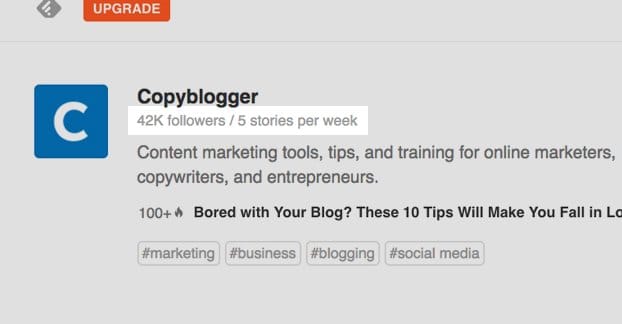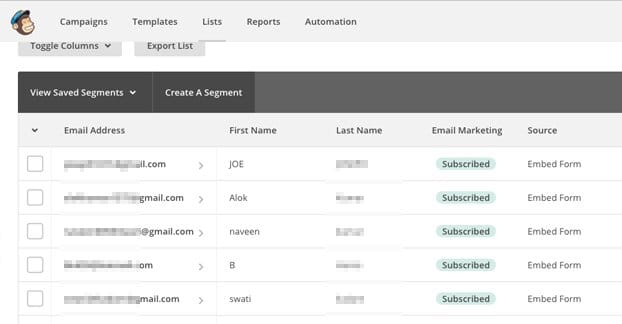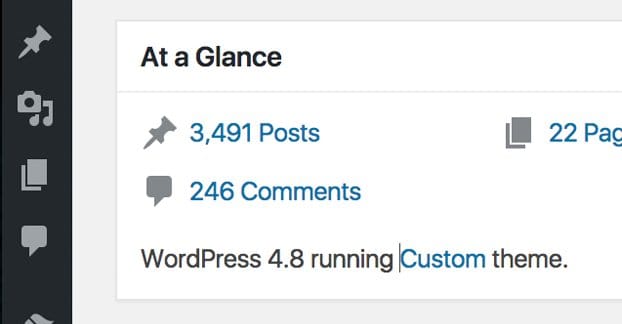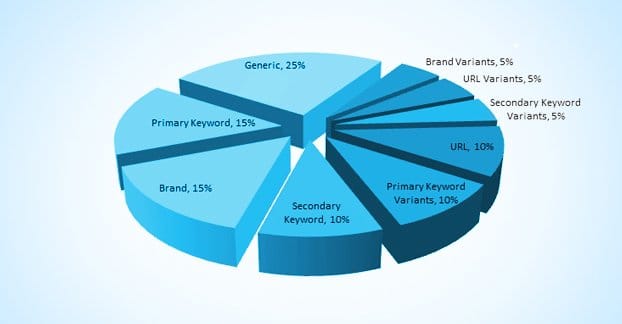For just about as long as guest blogging has been a viable technique for blog growth, people have been asking this one single question. Which is better: one good blog post, or a handful of mediocre posts? Should you focus on getting one excellent, top-tier guest post spot a month – or every few months – or should you send out guest posts like dandelion seeds on the wind?
As you might expect, the reality is that there’s no one answer to the question. Is one blog post better than five? That depends on where the posts are published, what kind of topics they cover, and how relevant your site is to the hosts.
If you just sighed and rolled your eyes, well, congratulations. You’re beginning to learn something about the reality of marketing. There’s never one easy answer; there’s nuance everywhere.
Option 1: Fewer, High Quality Posts
Let’s say you’ve been running a moderately successful site for a while, and you want to get into guest posting. You’ve decided that you don’t really want to spend a lot of time on low returns, though, so you’re aiming for nothing but the best. You want your posts to show up on sites like Forbes, the Washington Post, the New York Times, and other high quality, multi-topic agencies.
This is a viable strategy, but it has its own pros and cons.
Pro: You’ll rack up loyal readers. The people who frequent these kinds of sites tend to read most of the content that shows up, at least in their particular channels of interest. They’ll read your content, and if they like it, they’ll take note of who wrote it. You might not get many converted users on the first post, but as you post each month on an ongoing basis, you start to earn an audience.


The audience you earn is going to be where the real value of the post comes in. A good guest post even on a site like Forbes isn’t necessarily going to get you a ton of traffic. However, those few highly engaged readers will be more likely to check out your site, subscribe to your mailing list, or buy your product. They’ll also be more likely to link to your posts or to your site in their own content, particularly if they’re influencers in the same niche.
Great content is some of the best influencer marketing. Influencers tend to have hordes of mediocre people nipping at their heels, trying to get a bite of attention. It takes something valuable to stand out and make those influencers take notice.
Pro: You’ll have limited access to a great promotion engine. There are three tiers of this benefit. At the top tier, you might be featured by the host site, or at least linked to in their newsletter digests or through their social media accounts. The sites and social managers in question won’t be linking to your website; rather, they’ll link to the post they published. However, that can still get an extra surge of traffic to your content, which is excellent for more authorial awareness and exposure to your links and content.
The second tier is the other people and channels that might share your post. The industry aggregators that keep up on everything might share you, the loyal fans will share you, and the influencers could share you. It all compounds to more exposure, and the better your content performs, the more likely you are to get more circulation and opportunities later.
The third tier is all of the continued exposure you get as the post sits and circulates on a high profile site. It’s not a lot, but it’s not nothing, and sometimes even just your name on such a site will get you opportunities you wouldn’t otherwise have found.
Pro: You’ll find an influx of new subscribers to your mailing list, RSS, or other channels each time you post. Some people aren’t too fond of having RSS feeds or cluttering up their email inboxes, but at the same time there are plenty of people who thrive on multiple media streams coming in from every direction.
Regardless of your own personal preferences or inclination, there are people who will subscribe to you when you post, based on the content you post. The better your content, the more people will be persuaded that you’re worth following. When you’re only posting once or twice a month, or even less, it stands to reason that you’re spending that time creating the best possible quality content you can make.
Pro: It opens the door to more esoteric opportunities. When you have a high profile post on a high profile site, people will come to you with pitches. Some of them will be garbage, like people with spam blogs looking to syndicate your content, or people who want you to write for a site you wouldn’t want your name on. On the other hand, some people might come to you asking if you’re willing to partner with them for some mutually beneficial event promotion, or you might get a book deal, or who knows. There are always people out there looking to take on clients, hire freelancers, and make partnerships.
Pro: You’ll be able to take pride in the work you’ve produced. When you limit yourself to nothing but the best, everything that represents you on the internet is the best quality content. You can earn a reputation as an authority, as a thought leader, and you can be proud to have done it.
Con: It takes a lot of time. This whole process is not going to be easy, unless you’re already in a position of power. Rand Fishkin can get a spot on Forbes pretty easily. Most other people are going to have a harder time doing it. Not only does it take a lot of time to pitch something and be accepted, it takes a lot of time to actually produce that higher quality content. If you don’t want to be rehashing existing content, you need to be doing deep analytics or actual first-hand research. This isn’t simple and it isn’t fast.
Con: You won’t get a lot of traffic from these guest posts. Like I mentioned above, the traffic you DO get will be pretty high quality on average, but there won’t be a lot of it. Guest posts only gather in traffic in aggregate, and only when you have a lot of them. Even then, it’s difficult to determine how much of the benefit is coming from the guest posts and how much is coming from natural SEO growth.
Con: You will have less you can use as advertising fodder. The less you have around the web, the less you have to promote. You’ll end up sharing the same content on your Twitter and Facebook over and over, and people might get tired of it.
Con: It’s very hard to get started if you don’t already have a lot of reputation to your name. You can’t go with an unknown blog and get a guest post position on Forbes; you need to work your way up the industry chain. You might need posts on Fast Company and Entrepreneur to get you into Forbes, and you might need posts on half a dozen other blogs to get into those two. It stacks up.
Option 2: Lower Quality but More Frequent Posts
The opposite side of the spectrum is creating as many posts as you can for as many different sites as you can, as often as you can.
There are limits to this technique. There are only so many sites accepting guest posts at any given time, and you can only produce so much content at once. You can buy content, of course, but that can get very expensive for how little return you might see. You also can’t roll with super low quality content, spun content, or scraped content; that just demolishes your site reputation and your reputation as an author. In particular, if you’re buying content, you need to make absolutely sure it’s not just spun from some other source.
You also have to make sure your target sites are at least somewhat similar to your own as far as topic, and that they have some level of value. You can’t guest post on a spam site and expect positive returns, and you can’t guest post on a completely off-niche site and get any value out of it.
Pro: You get more of everything. To a certain extent, SEO and internet marketing are a game of numbers. Every guest post you publish is another link back to your site, which is good for both a robust link profile and for the link juice that comes with them. Every post is a chance for more people who wouldn’t have otherwise seen your content to come read it on your site.
You also get more exposure. More exposure means more people who might be content creators who could offer you a position, offer you work, link to you, or just share your content with their audience. The second-hand value stacks up when you have more sources of first-hand value.
Pro: You get to cover and explore more ideas. Any time you have an idea that isn’t quite right for your own site, and isn’t good enough for a site like Forbes, you can write up that guest post and pitch it to a bunch of lower quality sites. Someone will probably accept it, so long as it’s at least mildly interesting.
You can also take one idea and spin it off into several posts on different sites. As long as the content isn’t the same, you can write basically the same thing several times and get it published on several sites independently. This further reinforces your position as a thought leader, by showing consistency of ideas across the industry.
Con: You won’t be getting as many quality followers and subscribers. When you’re opting for a volume-based approach, you’re not making flagship content, you’re making something just a bit above filler. It might be good, but it’s junk food good; the kind of good people don’t want to follow up. You might get plenty of people clicking through to your site, but your conversion rates will be way down compared to higher quality sites and higher quality content.
Con: Someone might call you out on your shenanigans. It’s always possible that you might develop a bit of a reputation for your relatively low quality content, your broad-but-shallow perspective, and your lack of actual, real, unique and tangible value. It’s often not something you’ll be able to trace back to anyone, either, it will just be a prevailing opinion you encounter time and again.
Option 3: The Real Way
At the end of the day, you can’t go with either one of the above options. You need to start small, with more frequent, easier guest posts just to get your name out there. As you gain exposure and prominence in your niche, then you can start posting on better, higher quality sites. As you work your way up the ladder, though, you can’t simply abandon your old post, so to speak.
Essentially, you’re going to have two different guest post campaigns running at the same time. One of them will focus on a regular output, half a dozen guest posts per month or so, whatever level you feel comfortable producing on a regular basis. This broadens your link profile, gets your name, face, and link out there, and opens up doors to other sites. The other will focus on the occasional, sporadic, high-tier guest posts that can bring in a ton of value but are a lot harder to access. Combined, the two of them are a lot more likely to bring lasting value than one or the other alone.
 ContentPowered.com
ContentPowered.com






